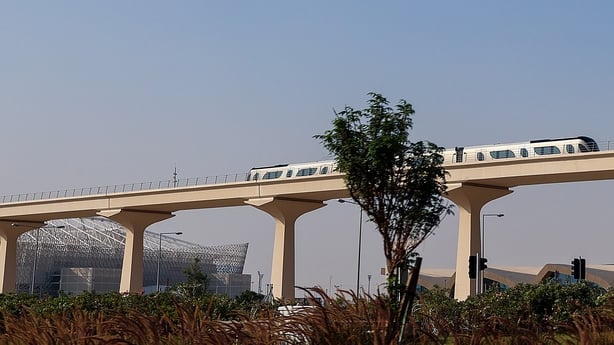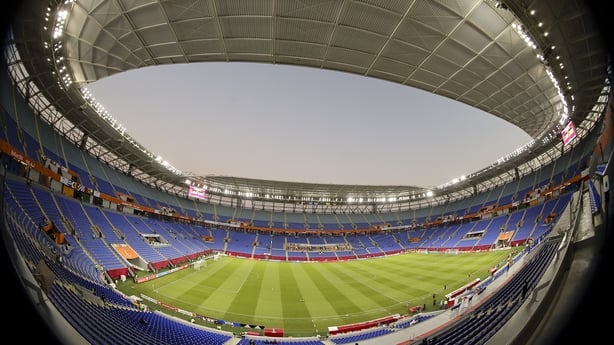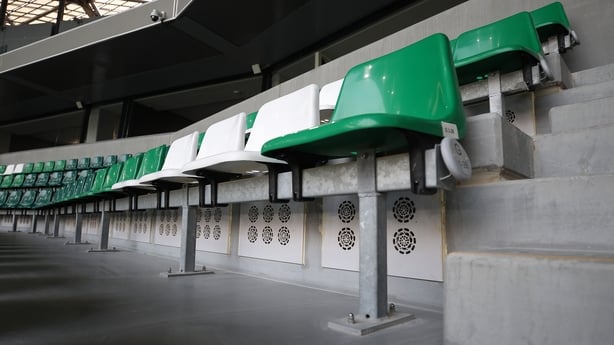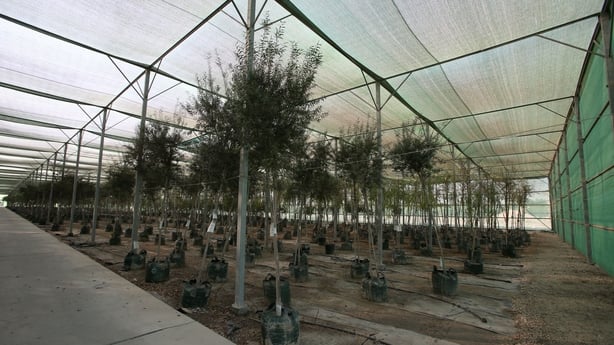In 1983, American undergraduate student Jay Westerveld was en route to Samoa on a research trip when he made a surf stop-off in Fiji.
Staying in budget accommodation, he snuck into a sprawling luxurious resort close by for a little more comfort when he was taken by a note requesting customers to pick up their towels.
"It basically said that the oceans and reefs are an important resource, and that reusing the towels would reduce ecological damage," Westerveld later recalled. "They finished by saying something like, 'Help us to help our environment'."
What struck the student was the irony at play. At the same time of asking for greater awareness of the environment, the resort was expanding significantly and building more bungalows.
He recalled this three years later when writing a paper on multi-culturalism, writing: ‘It all comes out in the greenwash.’
Asked to write an article on the topic in a magazine, the phrase quickly came into modern lexicon and green washing was born, even if the concept has been around considerably longer.
More than 35 years later, the principle remains, even if the means have become far more sophisticated.
In June of last year, Fifa said that it expects 3.6 million tonnes of carbon dioxide to be produced during the World Cup in Qatar, more than what many countries release in a year and 1.5 million tonnes more than the total produced at Russia 2018.
Remarkably, tournament organisers have vowed a carbon-neutral event, with Hassan al-Thawadi, secretary general of Qatar 2022, stating net-zero emissions for the tournament as a whole will be achieved "by measuring, mitigating and offsetting all our greenhouse gas emissions".
The carbon-neutral technologies used during construction, the solar-powered air-conditioning that will cool the stadiums, a modern electric metro system, the compact nature of the tournament, the absence of internal flights and a huge tree-planting programme are just some of the reasons put forward by the Qataris for such lofty goals.

Industry experts remain wholly unconvinced.
"The internal transport arrangements and the idea of a recyclable stadium has merit, but the overall claims of carbon neutrality do not add up in my view," Professor John Sweeney of the Irish Climate Analysis and Research Units (ICARUS) at Maynooth University, tells RTÉ Sport.
Outside of Fifa and Qatari spokespeople, those with opposing views are few and far between.
Of the eight stadiums - separated by roughly an hour's drive and 43 miles at most – that will be used, seven have been built from scratch, with only one to be used as a home ground for a football team afterwards.
The most headline-grabbing stadium is undoubtedly the Ras Abu Aboud Stadium - also known as Stadium 794 - with the 40,000 capacity venue to be completely dismantled after the tournament.

Constructed from shipping containers and removable seats, it is the jewel in the crown as far as the hosts are concerned with a positive green image.
Croke Park Operations Executive Colin O’Brien is heavily involved in how GAA headquarters continues its own sustainability journey and notes the advantages that new stadia can enjoy around the area of sustainability.
"Croke Park is relatively old stadium, so we need to invest significantly in areas such as energy efficient lighting upgrades, upgrading all our plant and machinery to be more energy efficient, installing solar panels and water harvesting systems etc. so we don't fall behind," he tells RTÉ Sport.
"We’re currently calculating our own carbon footprint so we know where we are at and what we need to do to offset it."
Sustainability is a major feature of their new stadiums and there is no disputing that
"The stadiums built in Qatar do have some fantastic sustainable features in areas such as energy, waste, and water efficiency and they will have the certifications to prove that," he tells RTÉ Sport.
"Sustainability is a major feature of their new stadiums and there is no disputing that."
Recent history is littered with World Cups and Olympic Games blasting through a city with a shiny new stadium, leaving behind a whirlwind of debt and emptiness.
The Arena da Amazonia in Manaus was a four-year build for the 2014 World Cup, a project that cost the Brazilian government upwards of $300m.
Used for just four games at the tournament and two at that year’s Olympics, what remains is 40,000-seater stadium where the local football team, at most, attracts in the region of 1,000 fans.
In that context, the dismountable stadium is being put forward by Qatar as a potential blueprint for the future, yet Philipp Sommer of Environmental Action Germany fails to see the ‘green feat’.

"To build a new stadium just for this event and to already plan that it will not be used again because you don’t need it anymore, it’s not really a sustainable thing," he said.
O’Brien has been a curious observer of reports and public utterances surrounding the environmental impact of Qatar 2022, especially those from the host country.
"I think they are being either very creative or naive with their calculations," he says.
And with good reason.
Conveniently for the Qataris, their carbon emission calculations are based on a 'use-share' model, in which the World Cup doesn't take responsibility for all of the stadiums' whole-life emissions, but only for a small portion relative to the duration of the tournament.
A report by Carbon Market Watch suggests the construction of the eight new stadiums has been underestimated by a factor of eight.
"Qatar has been working 12 years for this. To claim it's just a four-week event is not realistic when it comes to total carbon emissions relating to the event as a whole," says O’Brien.
Despite much fanfare, stadium air conditioning is expected to contribute only a minimal amount to the tournament's climate impact.

"Their carbon emission estimations seem low and only account for the duration of the event itself, without taking into account the long-term impacts," O’Brien adds.
"The legacy impact of an event plays a huge part in the area of sustainability, the ‘how’ and ‘what’ will the stadiums and facilities be used for after the event is over."
Maintenance alone of the playing surfaces - eight pitches and 136 training grounds - in a country where the mercury can hit 40 during their summer months - in an energy-intensive process.
Each playing surface requires 10,000 litres of water on a daily basis in winter, and 50,000 during summer months.
Fifa is backing Qatar to reach its sustainability goals, publicising some fandangled environmental certifications and trotting out PR-laden statements.
"The FIFA World Cup 2022 Sustainability Strategy will enable us to deliver a tournament that sets new benchmarks for social, human, economic and environmental development," one read.
How else can the world's largest producer of natural gas possibly offset emissions?
Carbon credits is the simple answer, where renewable energy projects are being trumpeted.
The country’s first solar power plant is operational and is expected to reduce the reliance on power generation.

Qatar has pledged to plant 10 million trees by 2030 and the compact nature of the country, but this is further window dressing in the eyes of some.
"The commitment to plant millions of trees by 2030 is classic greenwashing," alleges professor Sweeney.
"Where will these trees be grown in a desert environment? What will be the commitment to irrigation involved over their lifetime?
"But of particular concern is the fact that their establishment will actually increase emissions by 2030 and only later in life will they be net sequesters. This sort of creative accounting is widely used by interests to justify current emissions."
Visit Qatar draws attention to flight travel, or lack of requirement of it in the country, as a positive, but that is a narrative that fails to tell the entire story.
The vast majority of fans travelling to the World Cup will do so by plane on Qatar Airways given the only land border is to Saudi Arabia, and even that border is a significant distance from Riyadh, Jeddah or any of the other big cities.
In March, of the 30,000 available hotel rooms, 80% were pre-booked by Fifa for teams officials and sponsors, though the country's Supreme Committee for Delivery and Legacy insisted last month the Gulf state would deliver up to 130,000 rooms in time for the tournament.
With more than a million soccer fans are expected to attend the tournament, Abu Dhabi and Dubai are likely to be commuting bases over the course of the four weeks.
Qatar Airways has opted to put on a shuttle service operated by regional airlines in and out of Doha on match days from Gulf cities, including at least 60 daily flights to and from Dubai.
People are far more prone, of late, to accept anything that they read while scrolling at high speed
As one observer remarked, it will stretch the credibility of the tournament's elastic carbon-neutrality slogan to "snapping point".
"The 60 commuter flights per day really negates any credibility for carbon neutrality," adds Sweeney.
"Of course an international flight is not attributed to any national entity, but these are additional flights solely to facilitate a four-week event."
A "sustainable hospitality solutions" is what the Qatari authorities have publicised, but like many other statements regarding a "green" focus, has been called into question by leading industry experts, with claims of "creative accounting" never far from the surface.
Thirty-six years on from coining the phrase, does Westerveld feel that people are less willing to accept practices that fly in the face of sustainability?
"I think that people are far more prone, of late, to accept anything that they read while scrolling at high speed," he tells RTÉ Sport. "So I feel they're turning one massive, collective blind eye even more egregiously than ever before."







